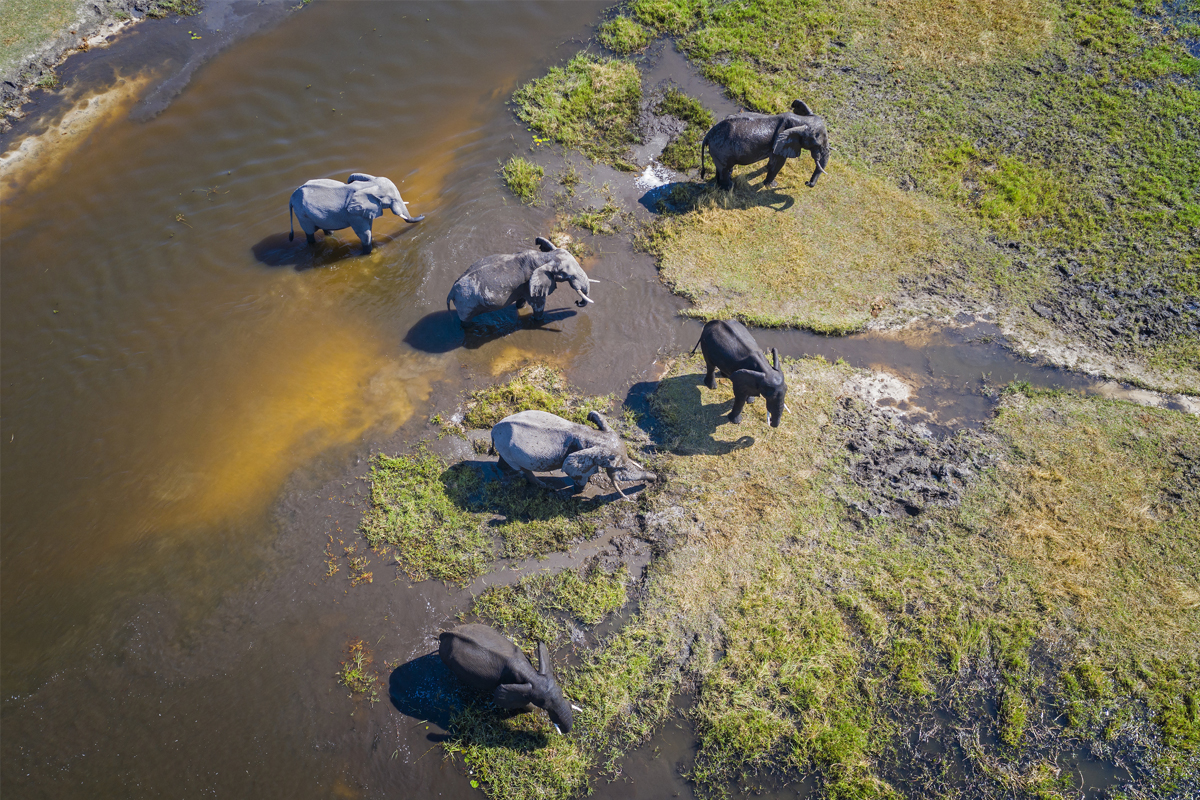With gentle winds sweeping Delhi AQI remains ‘moderate’
Delhi woke up to pleasant weather on Friday with the flow of gentle wind and a minimum temperature of 10.7 degrees Celsius and an AQI of 131, which falls under the category of 'Moderate'.
The landlocked Botswana is semi-arid and has two main seasons: wet and dry. The dry season is from May to October. This is peak season for wildlife safari.

PHOTO: iStock
Capital: Gaborone
Currency: Botswana pula
Ethnic group: Tswana (or Setswana) 79%, Kalanga 11%, Basarwa 3%, other, including Kgalagadi and white 7%
Languages: Setswana 77.3%, Sekalanga 7.4%, Shekgalagadi 3.4%, English (official) 2.8%, Zezuru/Shona 2%, Sesarwa 1.7%, Sembukushu 1.6%, Ndebele 1%, other 2.8% (2011 est.)
Religions: Christian 79.1%, Badimo 4.1%, other 1.4% (includes Baha’i, Hindu, Muslim, Rastafarian), none 15.2%, unspecified 0.3% (2011 est.)
Advertisement
WEATHER AND CLIMATE: The landlocked Botswana is semi-arid and has two main seasons: wet and dry. The dry season is from May to October. This is peak season for wildlife safari. Temperatures are around 25°C, but they are at least 10 degrees cooler in the south. The Kalahari Desert, in the southwest, may experience cold and frosty early mornings and evenings too. The wet season is from November to April. November can be very hot and humid, while January and February are the wettest months. Some safari lodges and camps are closed during this period too.
Advertisement
SECULAR CELEBRATIONS: Public holidays are scheduled for four-day weekends. Secular holidays include President’s Day in mid-July, and Botswana Day on 30 September, which celebrates independence. Other holidays are New Year’s Day, Easter, Labour Day, Ascension Day, Sir Seretse Khama Day, Christmas Day and Boxing Day.
FOOD AND DRINK: Most of Botswana’s safari lodges and camps serve excellent international-style cuisine that incorporates local influences such as game meats or traditional maize or sorghumbased Botswanan staples. Good restaurants and bars can be found in most major towns and cities, often in the hotels. In rural villages and less developed areas food is generally more basic, usually consisting of a stiff maize-based porridge (pap) with some form of stew. Goat, beef, chicken and river fish are all common sources of protein for locals. There are plenty of locally grown vegetables and fruits available at local markets, including the interesting marula fruit and tasty local wild spinach. Watermelons are also believed to have originated in Botswana.Some of the specialities are Seswaa, Kalahari trues, Mopane worms, Morogo, Vetkoek, Serobe, Biltong, Dikgobe and Bojalwa.
INDIAN PRESENCE: There are roughly 10,000 to 11,000 people of Indian origin settled in Botswana, out of which approximately 3000 to 4,000 people have acquired the Botswana nationality. The Indian community in Botswanais mostly engaged in the services sectors, namely, retail, teaching and accounting professions. They are also engaged in manufacturing sector. Most of the Indian immigrants have migrated from the States of Gujarat and Southern Indian States Kerala, Andhra and Tamil Nadu. They have maintained their linguistic, religious and cultural traditions.
COMMERCIAL RELATIONS: Botswana offers a business friendly atmosphere and welcomes foreign investment. Botswana is heavily dependent on diamonds which forms approx. 40% of its GDP and almost 70% of its export earnings come from this single natural resource. Bilateral trade for the year 2017- 18, Apr-May 2017 trade figures stood at 382.15 million. The main items of exports from India in recent years have been manufactured goods, metals, machinery and equipment, cotton yarn, fabrics, ready-made garments, drugs and pharmaceuticals and transport equipment. The opening of Botswana’s Mission in New Delhi in 2006 and Botswana Export Development and Investment Authority (BEDIA), now called BITC representative office in Mumbai in 2010 gave impetus to the bilateral trade and investment. The first branch of Bank of India was set up in Gaborone on 9 August 2013; while the State Bank of India opened its branch on 26 November 2013 in Gaborone. Bank of Baroda has been operating in Botswana since 2001. The Indian diamond companies and businessmen, especially from Gujarat (Surat) have always shown keen interest in buying rough diamonds as well as in investment in the downstream industries in the diamond sector, mainly in the cutting and polishing of the rough diamonds. At present two major Indian companies, Blue Star and KGK Diamonds have offices and factories in Botswana. Besides, diamonds, Botswana also has huge deposits of coal, copper, nickel, soda ash, salt, and uranium. The mineral sector roughly forms 23% of its economy. With huge coal deposits, the Government of Botswana has announced a “Coal Roadmap” in early 2012. A number of Indian companies have shown interest in exploring potential for viable investment in the mining sector for export of coal to India for power generation. M/s Jindal Steel and Power Limited (JSPL) took over CIC Energy (a Canadian company) for beneficiation of coal mining and power production. JSPL has plans to set up two coal-fired 300 MW power in the Mamambula coal blocks areas where huge coal deposits have been found.
VISA: Documents required are fully completed Immigration Form, Certified copy of a Passport showing validity not less than six months and photograph of bearer, Two recent coloured passport size photos, Covering letter, Provisional flight itinerary and accommodation bookings, Tour plan/trip schedule, bank statement, Marriage Certificate when travelling with spouse, Notarised/ Certified copy of Marriage Certificate for married couples traveling together, Notarised/ Certified copy of Birth Certificate, when travelling with children under 18 years.
TOURIST ATTRACTION
Compiled by Kunal Jain
Advertisement